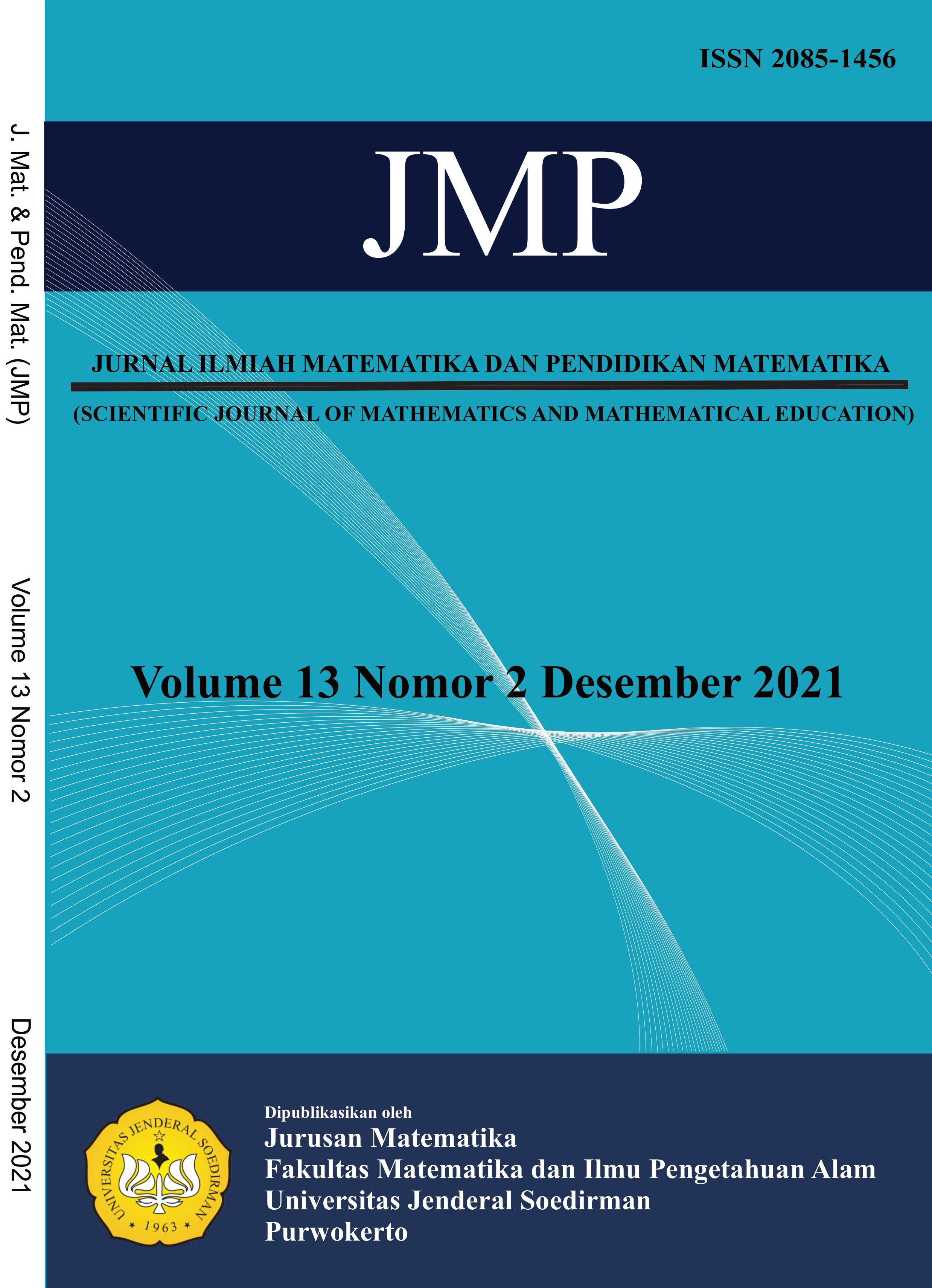APLIKASI K-MEANS DAN FUZY CLUSTERING DALAM PENGELOMPOKAN KECAMATAN DI KABUPATEN BANYUMAS
(APPLICATION OF K-MEANS AND FUZY CLUSTERING IN GROUPING SUBDISTRICTS IN BANYUMAS DISTRICT)
Abstract
ABSTRACT. Clustering N objects into c clusters can be used to get information about data observation. Among the clustering methods are K-Means (KMC) and Fuzzy C-means (FCM) methods. In the K-means method, objects are members or not members of the cluster, while in the FCM method, objects are included in the cluster based on the degree of membership. This study discusses the implementation of KMC and FCM in the custering of sub-districts in Banyumas Regency based on total of population, the number of health workers and the number of health facilities and infrastructure. The results showed that the KMC and FCM methods produced the same cluster membership. Furthermore, the analysis of clustering based on the number of population, the number of health workers and the number of health facilities and infrastructure (scenario 1) and based on the number of health workers and the number of health facilities and infrastructure which have been corrected by population (scenario 2). The percentage of the variance ratio between clusters to the total variance in scenario 1 is 69% while in scenario 2 it is 85%. Clustering based on scenario 2 is better than scenario 1.
Keywords: number of health workers, number of health facilities, K-Means, FCM.
ABSTRAK. Clustering N objek menjadi c cluster dapat digunakan untuk mendapatkan informasi tentang data. Di antara metode clustering adalah metode K-Means (KMC) dan Fuzzy C-means (FCM). Pada metode metode K-means, objek sebagai anggota atau bukan anggota cluster, sedangkan pada metode FCM memasukan objek ke cluster berdasarkan derajat keanggotaan. Penelitian ini membahas implementasi KMC dan FCM dalam pengelompokan kecamatan-kecamatan di Kabupaten Banyumas berdasarkan jumlah penduduk, jumlah tenaga kesehatan dan jumlah sarana dan prasarana kesehatan. Hasil penelitian menunjukkan bahwa metode KMC dan FCM menghasilkan keanggotaan cluster yang sama. Lebih lanjut analsis pengelompokan dilakukan melalui berdasarkan jumlah penduduk, jumlah tenaga kesehatan dan jumlah sarana dan prasarana kesehatan (skenario 1) dan berdasarkan , jumlah tenaga kesehatan dan jumlah sarana dan prasarana kesehatan yang sudah dikoreksi dengan jumlah penduduk (scenario 2). Persentase rasio variansi antar cluster terhadap variansi total pada scenario 1 sebesar 69% sedangkan pada scenario 2 sebesar 85%. Clustering berdasarkan scenario 2 lebih baik daripada scenario 1.
Kata Kunci: jumlah tenaga kesehatan, jumlah sarana kesehatan, K-Means, FCM.











